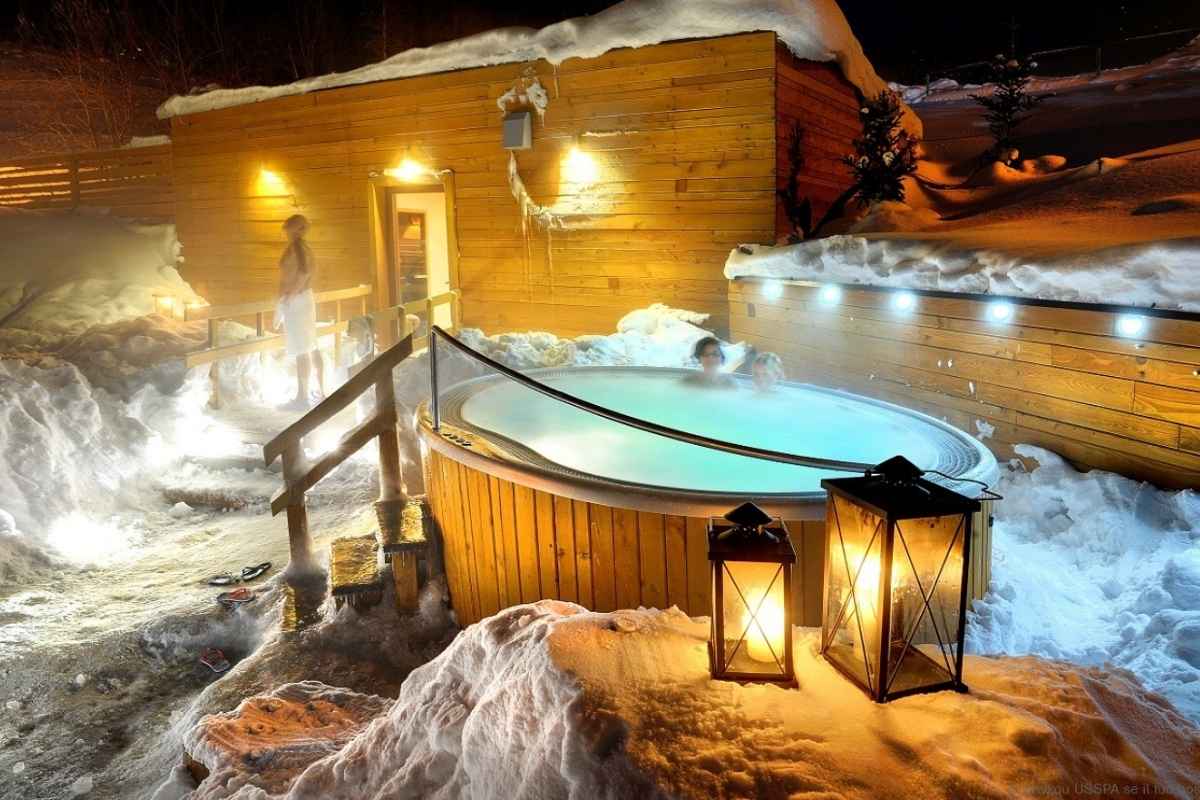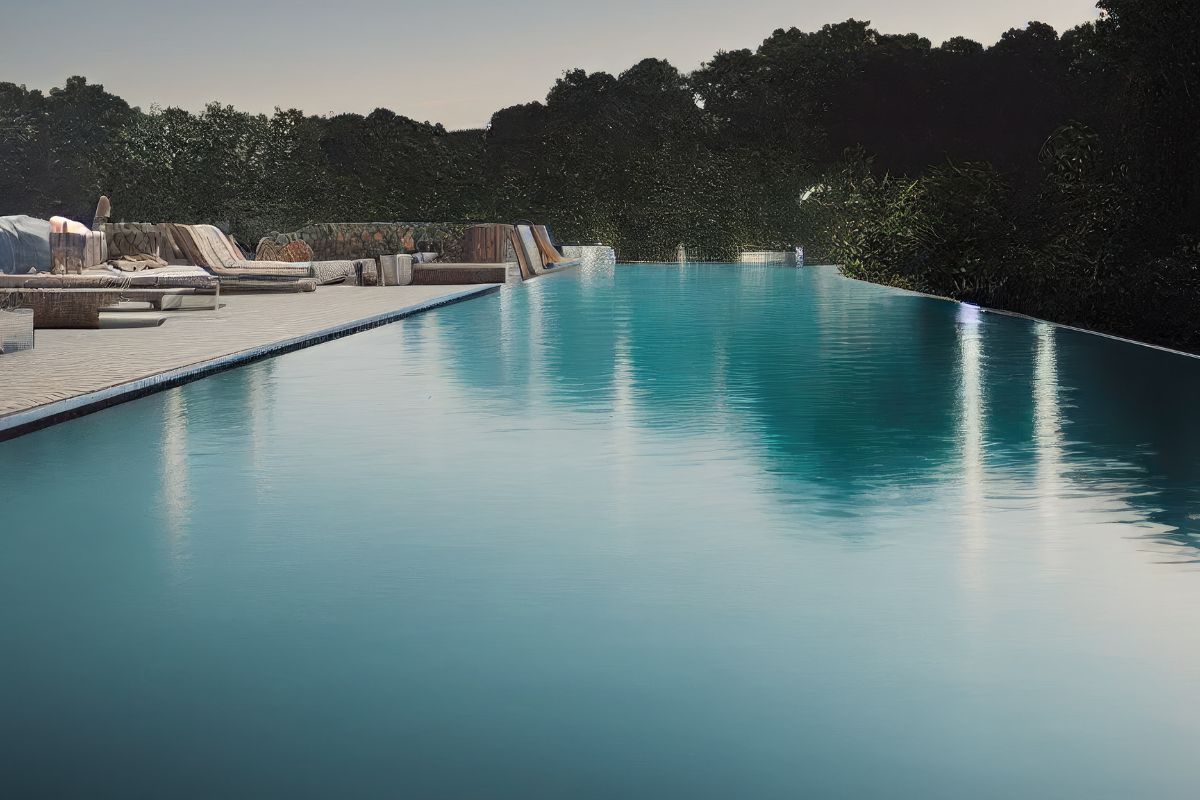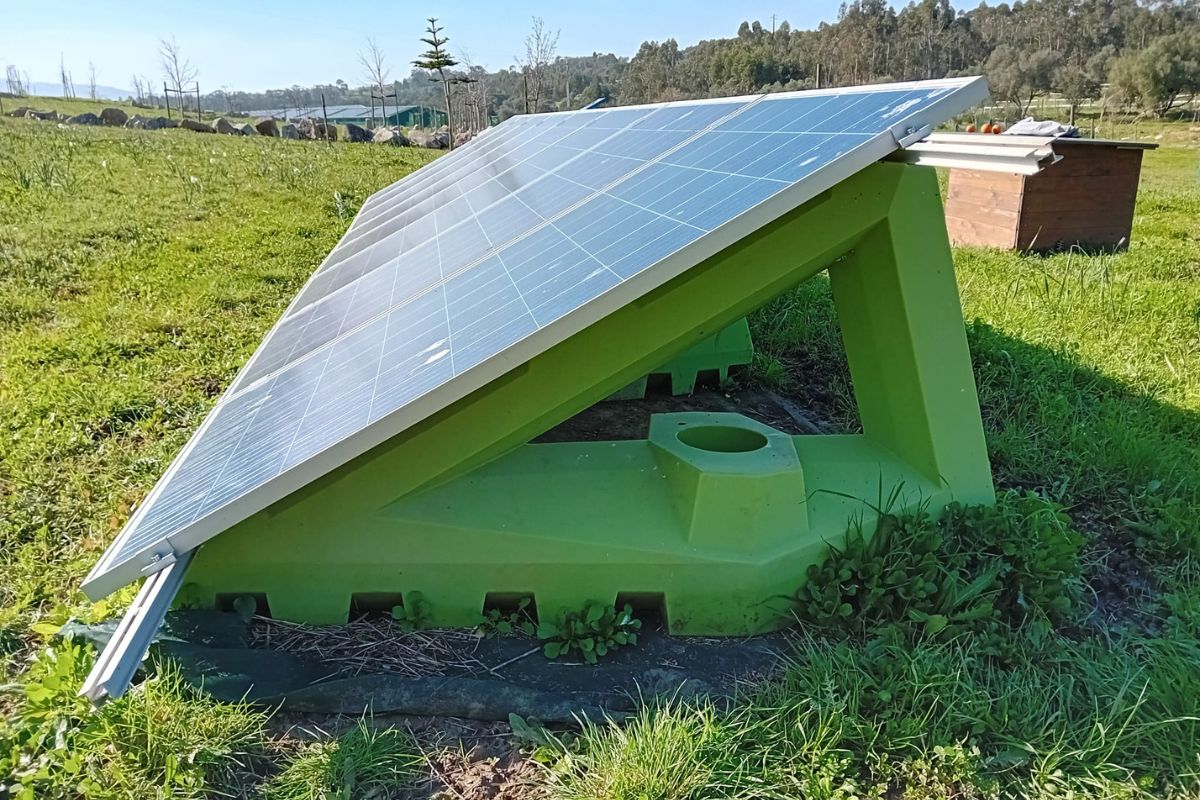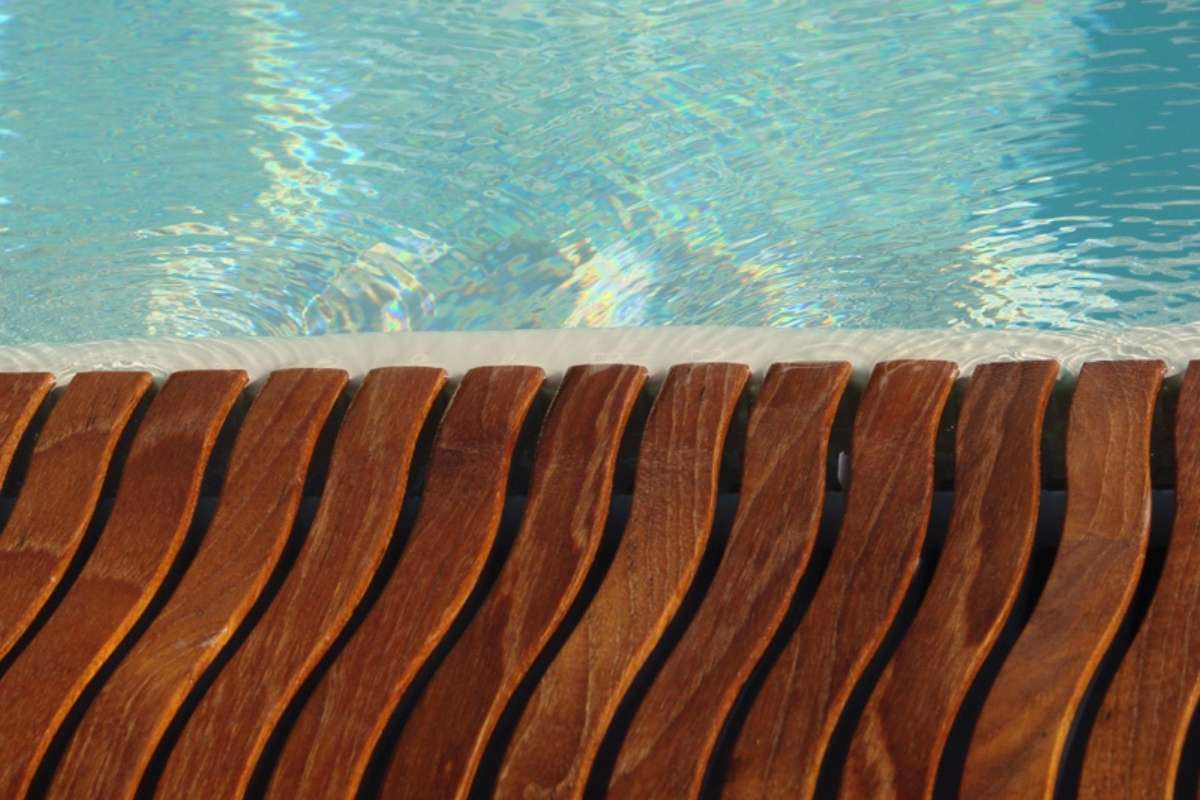Swimming pool grilles: types, uses, and maintenance
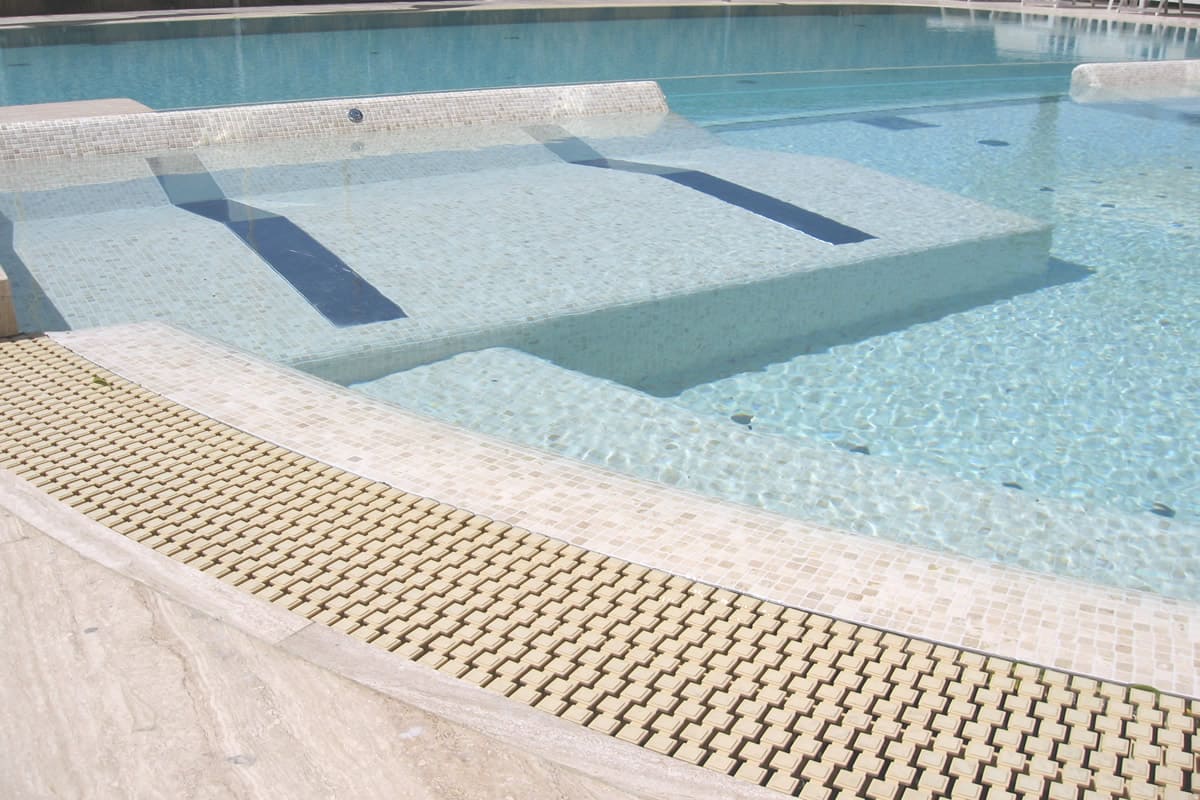
Swimming pool grilles are essential for ensuring safety and functionality, particularly in infinity pools. There are various types of grilles, each with specific features determining their ideal use. Perpendicular and parallel grilles are the most common, providing stability and ease of installation. These structures can be made from durable materials such as PVC, stainless steel, or reinforced polymers, each offering specific advantages in terms of durability and design.
The design of the grilles is another crucial factor to consider. Curved grilles, for example, provide a versatile solution that perfectly suits the aesthetic needs of modern pools. In addition to aesthetics, it's important to consider the practical benefits of curved grilles, such as their ability to follow specific architectural lines without compromising functionality or safety.
Finally, when choosing a pool grille, it's essential to consider factors such as poolside regulations and the price of infinity pool grilles. Ensuring that the choice meets the specific needs of the installation can make a difference in terms of efficiency and longevity of the system.
- Perpendicular, parallel, and curved grilles
- Infinity Pool grille: materials and design
- How to clean pool grilles?
- Poolside regulations: what does the law say?
Perpendicular, parallel, and curved grilles
Pool grilles are essential elements for ensuring the safety and efficiency of the drainage system, especially in infinity pools. Two of the most common configurations are perpendicular and parallel grilles, along with the modern curved pool grilles.
Perpendicular grilles are designed to be placed at a right angle to the pool edge, offering excellent water collection capacity from multiple directions. This arrangement is particularly useful in pools with complex or irregular designs, where water flow may vary.
Parallel grilles are installed in a straight line along the pool's edge, optimizing water flow into the drainage channels. This configuration is ideal for rectangular pools or those with uniform edges, where aesthetics and simplicity of design play a fundamental role. Choosing between perpendicular or parallel grilles mainly depends on the pool's shape and the desired visual effect. Both options offer significant advantages in terms of functionality and style, helping to keep your pool safe and attractive.
Curved pool grilles represent an innovative and versatile solution in the design of modern pools. One of the main features of these grilles is their ability to adapt to irregular shapes and curves, allowing precise installation along the edges of an infinity pool. This makes them ideal for custom projects where traditional straight lines wouldn't be suitable. Their elegant design adds a touch of sophistication to the entire environment, enhancing the aesthetic value of the pool structure.
Infinity Pool grille: materials and design
Pool grilles are a key element not only for safety but also for the overall aesthetic of the pool structure. The materials used in manufacturing the grilles are diverse and influence both the durability and design of the final product. Among the most common materials are PVC, stainless steel, and reinforced resins. PVC is valued for its resistance to weather and corrosion, making it ideal for outdoor pools. Stainless steel offers timeless elegance and is particularly suited for modern design environments, while reinforced resins combine lightness and sturdiness, allowing for easy installation and maintenance.
The design of the grilles greatly impacts the aesthetic appearance of the pool. Grilles can be designed with simple, minimalist lines or more complex patterns that blend harmoniously with the surrounding landscape. Additionally, customizable grilles allow for the selection of specific colors and finishes based on the client's stylistic needs. Choosing well-designed grilles not only improves functionality but also enhances the visual appeal of the entire pool area.
How to clean pool grilles?
Regular maintenance of pool grilles is essential for ensuring the proper functioning of the drainage system and the safety of the surrounding area. But how should the cleaning be done correctly?
First, it’s important to manually remove leaves, branches, and other visible debris using a rake or a brush with stiff bristles. Once the larger debris has been removed, it’s advisable to wash the grilles with a solution of warm water and mild soap. To avoid damaging the surface, it’s best to use a soft-bristle brush, especially if the grilles are made of PVC or stainless steel.
After cleaning, it’s necessary to thoroughly rinse the grilles to remove any soap residue and dry them with a soft cloth to prevent water spots from forming. Additionally, regular inspections should be conducted to ensure that the drainage channels are not clogged and that the grille is free from damage or deformation. A thorough inspection helps prevent more serious problems.
If the grilles are made of stainless steel, it’s advisable to use a specific cleaner to maintain their shine and prevent rust, while for PVC grilles, it’s best to avoid using overly aggressive products that could damage the surface.
Proper maintenance not only improves the appearance of the pool but also ensures optimal water drainage, keeping the surrounding environment safe and clean.
Poolside regulations: what does the law say?
When installing pool grilles, it’s crucial to also consider the relevant regulations to ensure the safety and compliance of the system. Regulations for pool grilles and poolside areas set specific requirements regarding the size of the grilles, their drainage capacity, and the distance from the water’s edge.
In many countries, laws require that grilles are designed to prevent accidents, such as hair or body part entrapment, which could occur if the openings are too large. It’s important that the grilles are equipped with a safety system that provides adequate protection, especially in public or commercial pools.
Furthermore, regulations regarding poolside areas stipulate that the surrounding surface must be designed to avoid water accumulation, ensuring proper drainage and preventing potential flooding. Before proceeding with installation, it’s essential to consult local laws or industry guidelines to ensure that the grilles and poolside area comply with all required safety and quality standards.



